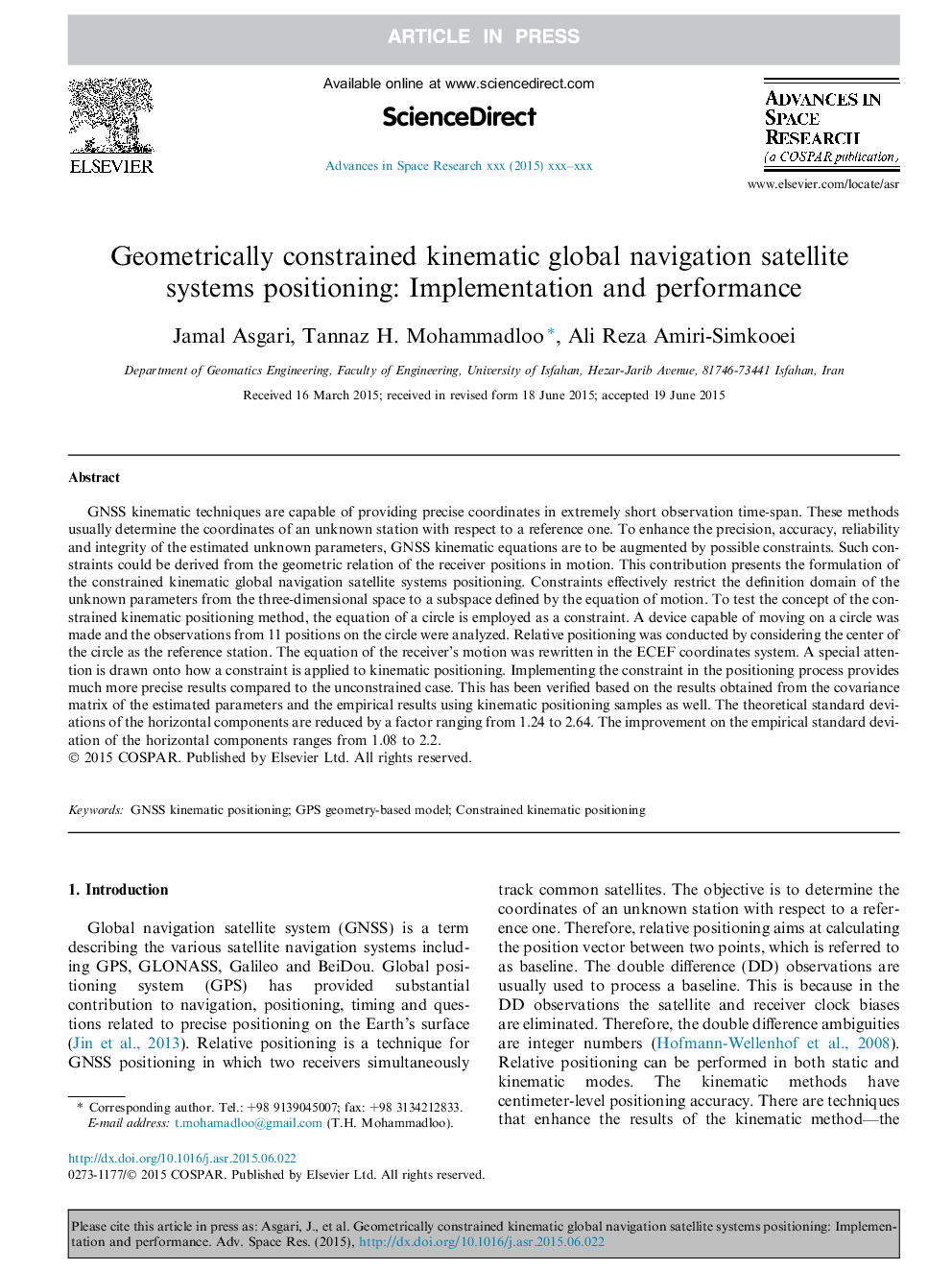| کد مقاله | کد نشریه | سال انتشار | مقاله انگلیسی | نسخه تمام متن |
|---|---|---|---|---|
| 10694202 | 1020015 | 2015 | 12 صفحه PDF | دانلود رایگان |
عنوان انگلیسی مقاله ISI
Geometrically constrained kinematic global navigation satellite systems positioning: Implementation and performance
ترجمه فارسی عنوان
موقعیت جغرافیایی سیستم های ناوبری جهانی سینماتیک محدودیت هندسی: اجرای و عملکرد
دانلود مقاله + سفارش ترجمه
دانلود مقاله ISI انگلیسی
رایگان برای ایرانیان
موضوعات مرتبط
مهندسی و علوم پایه
علوم زمین و سیارات
علوم فضا و نجوم
چکیده انگلیسی
GNSS kinematic techniques are capable of providing precise coordinates in extremely short observation time-span. These methods usually determine the coordinates of an unknown station with respect to a reference one. To enhance the precision, accuracy, reliability and integrity of the estimated unknown parameters, GNSS kinematic equations are to be augmented by possible constraints. Such constraints could be derived from the geometric relation of the receiver positions in motion. This contribution presents the formulation of the constrained kinematic global navigation satellite systems positioning. Constraints effectively restrict the definition domain of the unknown parameters from the three-dimensional space to a subspace defined by the equation of motion. To test the concept of the constrained kinematic positioning method, the equation of a circle is employed as a constraint. A device capable of moving on a circle was made and the observations from 11 positions on the circle were analyzed. Relative positioning was conducted by considering the center of the circle as the reference station. The equation of the receiver's motion was rewritten in the ECEF coordinates system. A special attention is drawn onto how a constraint is applied to kinematic positioning. Implementing the constraint in the positioning process provides much more precise results compared to the unconstrained case. This has been verified based on the results obtained from the covariance matrix of the estimated parameters and the empirical results using kinematic positioning samples as well. The theoretical standard deviations of the horizontal components are reduced by a factor ranging from 1.24 to 2.64. The improvement on the empirical standard deviation of the horizontal components ranges from 1.08 to 2.2.
ناشر
Database: Elsevier - ScienceDirect (ساینس دایرکت)
Journal: Advances in Space Research - Volume 56, Issue 6, 15 September 2015, Pages 1067-1078
Journal: Advances in Space Research - Volume 56, Issue 6, 15 September 2015, Pages 1067-1078
نویسندگان
Jamal Asgari, Tannaz H. Mohammadloo, Ali Reza Amiri-Simkooei,
